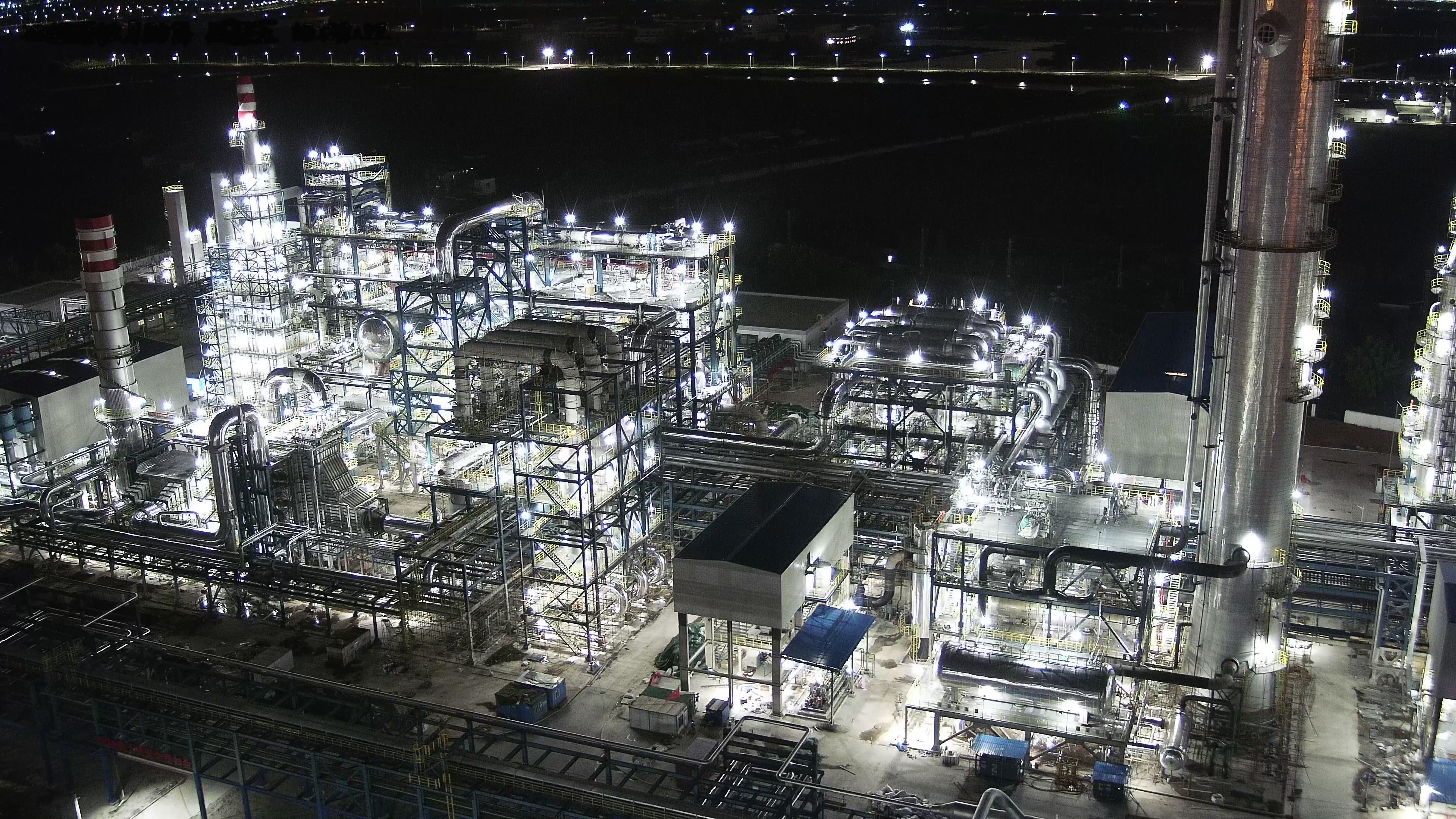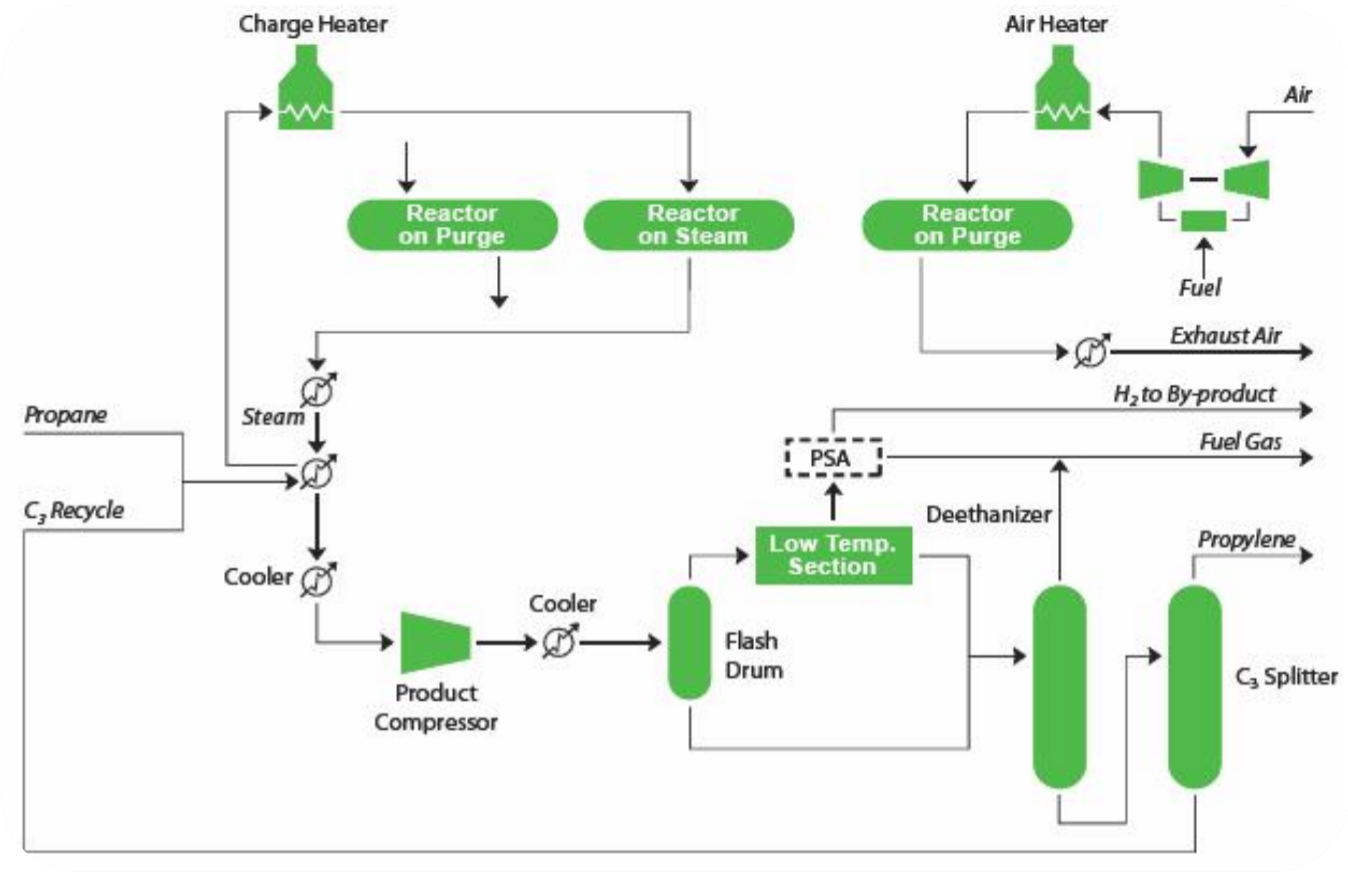Process Summary
The CATOFIN® technology is a unique process for the production of olefins, such as propylene (from propane) and iso-butylene (from iso-butane)[1].
Reaction Section
Lummus CATOFIN Technology uses fixed-bed reactors and a Chromium-based catalyst[2].
In the reaction and regeneration section fresh propane feed is mixed with recycled propane from a propylene-propane splitter. This stream goes to a de-oiler for impurities removal and then is carried to the reaction step, which is continuous and operates in cycles. In this step, multiple parallel reactors undergo a controlled sequence of reaction, catalyst reduction and catalyst regeneration[2].

CATOFIN® plant[3]
Recovery Section
In the product recovery section there is a low-temperature separation unit, the objective of which is to separate hydrogen and light byproducts generated in the reaction step from the main product[2].
The hydrogen-rich stream is then sent to a Pressure-Swing Adsorption (PSA) unit[2].
The liquid stream generated in the low-temperature separation is fed to distillation facilities consisting of a fe-Ethanizer and a propylene-propane splitter for product recovery[2].
Process Yield and Selectivity
According to the technology provider, the per pass conversion is >45% for propane and >53% for iso-butane, and selectivity is >88% wt/wt for propane and >89% wt/wt for iso-butane)[2], meaning that it requires 1,135 metric tonnes of propane to produce 1,000 metric tonnes of propylene, and 1,115 metric tonnes of iso-butane to produce 1,000 metric tonnes of iso-butylene.
Installed Capacities
By May 2024, Lummus claims that there are[1]:
- nine CATOFIN® propane dehydrogenation plants operating worldwide, producing more than 5.0 million tonnes of propylene per year.
- six CATOFIN® iso-butane dehydrogenation plants operating worldwide, producing close to 3.0 million tons of iso-butylene per year.
- Two units are simultaneously producing propylene and isobutylene in the same reactor system.
References
- LUMMUS Technology,Propylene Production -CATOFIN® Propane/Butane Dehydrogenation.
- Amir Razmi, May 2019, Propylene Production by Propane Dehydrogenation (PDH), (Process Review), Uploaded on Slideshare on 17th Jun 2019.
- Clariant, 16th July 2020, Clariant awarded a second CATOFIN™ catalyst contract with Dongguan Grand Resource.


































